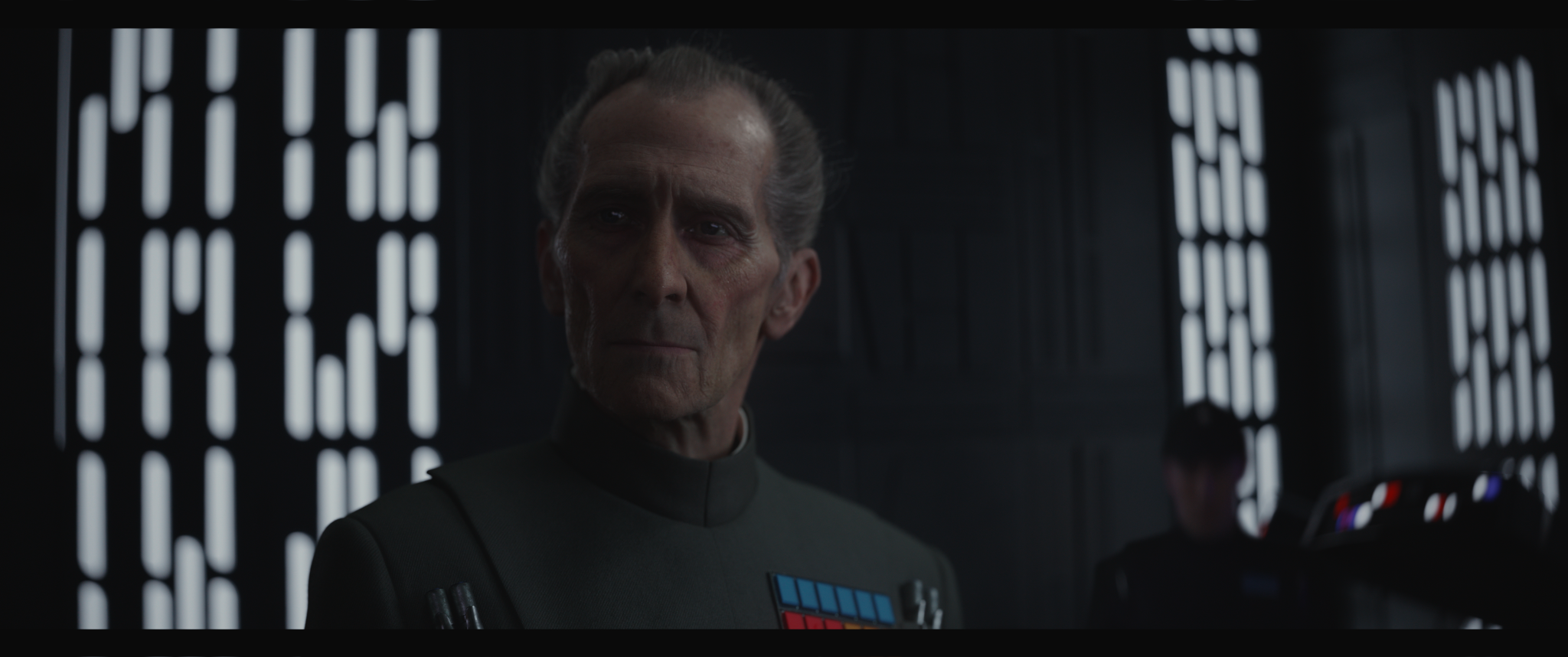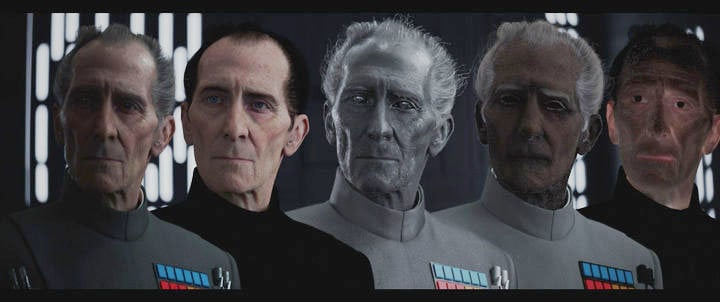
“Krennic’s Aspirations” is another outstanding track. Though the track closes with a feeling of tragedy, Jyn’s theme once again makes an appearance, signaling revived hope for the future. The use of sweeping strings and powerful woodwinds with the brass and percussion providing the backgrounds gives off a similar vibe to the Battle of Yavin suite from A New Hope. The longest piece on the soundtrack at just over eight minutes is “Confrontation on Eadu.” This one is another action scene, and though it takes a few minutes to truly get going, this ends up being one of the standouts of the entire score. The vintage mood ends (for now) with “Star-Dust,” a simple yet effective use of piano and strings that perfectly capture the feel of its use in the film. Giacchino does marvelously here, and although the main melody is relatively simply at first, it picks up and becomes more varied as the track goes on. We’re then thrown into the intense “Jedha City Ambush,” the first piece of true action music for the score. “Jedha Arrival” gives us a more fleshed out version of Jyn’s theme before going into an eerie melody of strings and percussion with woodwinds sprinkled in the background. It’s not the Imperial March, but it’ll do. “When Has Become Now,” which is basically the music for the Empire, is a march accompanied by bombastic brass gives off the feeling of evil, and the subsequent melody of low-strings further encapsulates that. “Trust Goes Both Ways” is vintage Star Wars-sounding, and sets this same mood for the tracks that follow (it is also the first time we hear the Force theme used). However, it establishes what has been identified as Jyn Erso’s theme or motif (which itself has been linked to a variation of a track from A New Hope crazy how music works, huh?).

Speaking of short, “Wobani Imperial Labor Camp” is the shortest track of them all, coming in at just 54 seconds. To longtime fans, not having even a sniffle of the Star Wars main theme may turn them off from this, but it is familiar enough to not be a distraction, and although short, it works. Giacchino uses a comfortable balance of each category of instruments in this track that eventually lead us to the theme for the title card of Rogue One. Halfway through “A Long Ride Ahead,” we return to the march-style that was introduced before.

The rest of the track establishes what we come to expect from the rest of the soundtrack: a varied use of percussion, a running rhythm of strings, and a sense of emotional buildup that not only is present in the music, but in the film too. The music that accompanies this shot, “He’s Here For Us,” begins with a forceful, surprising opening beat that feels somewhat awkward at first listen, but it fits the film and that’s really all that matters.

Rather than going with the standard opening crawl, Rogue One begins with a straight shot of space and a planet in the distance. With just a few months before release to work with, Giacchino managed to create a score that, like the film itself, cements its own, unique place in Star Wars lore.

Alexandre Desplat was originally tasked to write the music for Rogue One, but after he had to drop out of the project late in development, it was decided to bring on veteran composer Michael Giacchino to take his place. Thankfully, we were lucky enough to have Williams compose the score for The Force Awakens (and hopefully Episodes VIII and IX as well), but for Rogue One, the first standalone Star Wars film, Lucasfilm decided to go in a different direction. Star Wars without John Williams is a concept that many of us never thought we would have to endure, especially when the prequel trilogy concluded. (Warning: THIS REVIEW WILL CONTAIN SPOILERS.)


 0 kommentar(er)
0 kommentar(er)
